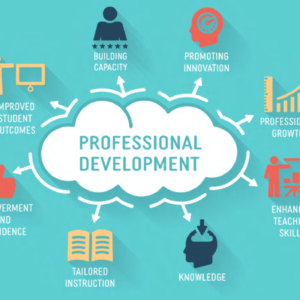
By the 21CLEO Research team
In this post, we consider what our data suggest about why working learners who are immigrants and refugees engage in employer-supported education and training initiatives. Does it matter that the course is free? Does it matter that they are paid or not? To what extent does it matter that the course content fits learner needs? The answers are complex, as you might expect, and support the findings we shared in our previous post, Complexifying Paid Learning.
English Learners in our Study
In total, we interviewed 27 working learners in our research. Of those, 16 were immigrants or refugees. This over-representation was intentional because, as a recent report by the New American Economy Research Fund notes, this population makes up a large percentage of front-line service workers in the US. Twelve of the 16 were from one workplace ESOL class at a large US airport. The other four learners who identified as being an immigrant or refugee were located in the southeastern and south-central United States. Among the 27 working learners, who had in total engaged in 33 instances or cases of education/training, there were only nine instances where the learners were paid for the time they spent in class and, in all but two cases, the on-the-clock training was directly related to the job required knowledge. These data provide more evidence that there is complexity in our participants’ reasons for engaging in employer-supported education and training, as discussed in our previous post, and raise more questions. We wondered how and whether being paid to learn contributes to participation in employee-supported education and training initiatives. It also led us to ask what the parameters of paid learning are and who gets to participate.
Workplace ESOL at the Airport
The airport was our first research site, and as noted previously, where we encountered most of the English learner participants. This site was unique in that the airport commission responsible for the day-to-day administration of the airport (e.g., cleaning services, retail leases, customer amenities) had contracted with an adult education program associated with a nearby school district to provide an onsite English language learning course free to airport employees. One of the commissioners explained how the program was part of their efforts to attract and retain high-quality employees in a time of high employment with a limited labor pool available for front-line entry-level work. She said,
“How do we create programming [at] the airport that shows how much we appreciate our employee base? And whether that is, you know, a robust discount program with access to fresh food during their shift or if it’s investing in their future and in their education and in their prosperity.”
The English language teacher concurred and also told us that meeting the needs of the employees was also a way to make the airport one of the best,
“What [commissioner] said is we want our employees to be happy. We want them to think that this is a great place to work. That’s not just a job. That they could have a career here. I mean, they (commissioners) want to be the number one airport. They want to have happy employees.”
Paid or Not Paid?
While the airport commission paid for the class, the airport concessionaires, the employers of the front line workers who cleaned the public places, ran the cash registers, staffed the retail outlets, etc. had the option of paying their employees while they were in class or not. One of the commissioners explained, “It’s not contractually an obligation, but [the employers] have agreed to pay their employees, their wages, while they participate in the class.”
However, when questioning the participants, we learned that only two were actually paid for time in class, and this was because the class happened to be scheduled for the days on which they worked. An individual who was not paid to learn said it was because class was on an “off day.”
At the airport, we found that learners did not prioritize being paid for the time they spent in class. For our participants, convenience was more important. Participants indicated that being able to attend class onsite and in conjunction with their work hours made it easier to participate, rather than having to go elsewhere in the city before or after a long work day. Wagaye, a working learner who immigrated from Ethiopia said,
“I’m registered in [an adult learning center]…..but I’m no go to center. I get the schedule, but I’m start[ing] two jobs, so I’m no go.…So this one is better for me. I like this good.”
Indeed, more than one learner described having multiple jobs and managed to squeeze in the class. However, according to our participants, the convenience of having the class on-site was not an absolute requirement. Some participants told us that they came to class on days off, even though it meant having to travel to the airport and go through security. The willingness to do so suggests a high level of commitment to learning – and a desire to make the most of a free ESOL course.
Learning is Future
It may be that the immigrants and refugees whom we interviewed across our sites were highly motivated to participate because they wanted to learn English or take other courses they hoped would help them reclaim the professional status they had held in their home countries. As Wendem, an airport employee put it, “I believe, learning is future.”
The participants’ high motivation may also be related to their previous experience with learning. Many said that they had earned degrees or advanced degrees from their home countries that had not been recognized in the United States. As experienced, successful learners, these individuals may have a commitment to learning because they see the connection between learning and goal achievement. For example, Tamarit, a working learner who had just been promoted to a supervisor at the airport said,
“I want to be fluent in English. That’s actually my aim to be in the class. In customer service, you have to serve the customer, and that’s actually the priority in the work environment. So in order to just live, in order to eat, you have to normally just prepare yourself for that environment, you have to be competitive just like everyone.”
Tamarit went on to explain how learning beyond the English class connected to his long-term goals:
“My goal is actually just like being one of the professional workers in the computer coding environment, that’s my goal … I am consistently working on that one so whenever I get one hour or 2 hours or 3 hours after work, I will stay till midnight or past midnight just to 2 o’clock. I am actually digging [into] free resources from the Internet.”
Obemi, who worked in electronics reclamation in the southeastern United States explained,
“I want to go far…. I want to start it again. I can’t start today because today I have no money. But I must live, I must survive with my family. So I take something, I do something. After that, I get another job, which is a little bit up, then the other one, you know. And after that, my focus. After that…another program and [another] masters or a PhD.”
My Background Is a Little Bit More Than What I Am Now
Lack of recognition of the credentials, prior knowledge, and work experience meant the participants were stuck in low-wage jobs. As Obemi put it, “My background is a little bit more than what I am now.” Because of limited funding and time, our participants were limited to educational training initiatives offered at no cost and at a time and place that fit into their demand. Unfortunately, the learning initiatives that met those criteria were not always a good match for their needs. Easily accessed training initiatives did not provide immigrants and refugees with certifications needed to do the work that would be allowed if their credentials from their country of origin were recognized. The cost of obtaining the certifications necessary to continue careers begun in their home country was prohibitive and often led them to programs of study and jobs for which they were overqualified, a condition called malemployment and described in more detail in the article we published in the journal Higher Education, Skills, and Work-based Learning.
In the case of the English language class at the airport, the level of instruction was too easy for some learners and did not further their language skills. As Ijakoo, an immigrant from Ethiopia with a four-year degree in economics explained,
“Sometimes I feel discomfort you know? I [say] that this is not my place…. I have a degree in economics in my home country. My problem is I understand [everything], that’s a little different here we use t’s like d’s and things like that. So at this time, the past and present tense (class content) that’s not my problem.”
In another case, the immigrant working learner was directed to a program in an area with a high employment need that did not build on her prior knowledge and experience. Maggie was from Haiti and held a four-year degree in economics with additional education in accounting and computer science. After moving to the United States, she worked in a variety of low-wage jobs while taking classes in English and becoming a Certified Nursing Assistant. These classes were paid for through a non-governmental organization. At the time of the interview, Maggie said she was looking for a CNA job and hoped to eventually become a registered nurse. This career switch puzzled us because she said of her life in Haiti,
“I was working in a national bank. I was a cashier for five years. That was a good job. Wouldn’t quit [that] job. I like it. I miss it since I moved here.”
When asked why she changed careers from economics and banking to medicine, Maggie explained that it was because of her belief in the power of learning.
“The only way you can go up is to go to school. To meet a goal. To change my life. To grow….And I’m going to teach that to my children, if you want to go [up] in the world, you have to go to school.”
In some cases, working learners chose to switch careers to areas where funding for classes was available or better fit their life needs. For example, Ijkoo, who also held an economics degree from her home country, told us,
“I changed a lot, it’s just so hard. My plan was to go to Medical School but that doesn’t work for me. That’s why I just want to upgrade to the software developers as my plan now.”
Others accepted their current employment status while strategically seeking out coursework that would allow them to leverage their prior knowledge. For example, Obemi told us he is a refugee from the Republic of Congo and then Rwanda. He holds a master’s degree in business management and has over 20 years of experience in business and accounting. In the United States, he was working in an electronics recycling center, learning English, and taking courses in bookkeeping, tax preparation, and Excel. He explained that he chose the classes he did because they would help him move into his field once his certifications from Rwanda are evaluated in the United States.
“If I get my evaluation, I can do other things. Right now I’m someone who doesn’t have any school documents. I’m obliged to do something and this is what you can do. It’s why I began by bookkeeping, because I know bookkeeping. I did it for 21 years. It’s why I took that one because if I finish, I can enjoy a good job.”
For all of these working learners, participation in an education or training initiative is motivated by a sense of the future and a belief in the power of learning. Being paid to learn would have made their lives easier, but it was not an incentive for engagement.
It’s Complicated!
Consistent with our findings about paid versus unpaid time to engage in employer support education and learning initiatives, paid versus unpaid time for immigrants and refugees is also complicated. The complication, however, arises not around whether participation in learning is paid or not. The complication is the degree to which (or not) the education or training initiative fits the needs of the working learner or fits the needs of the employer. As it currently appears, the needs of the employer supersede that of the working learner.




